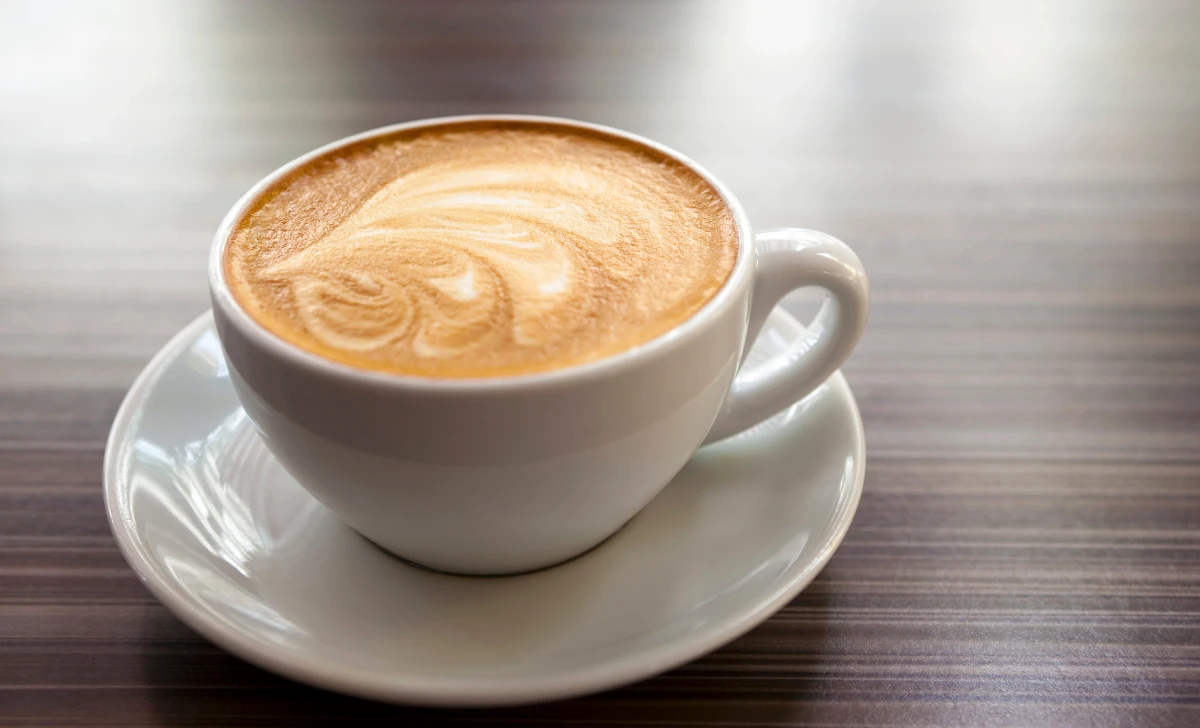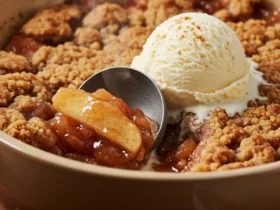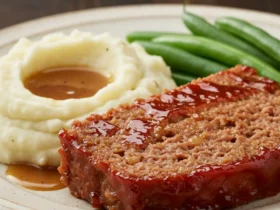Coffee lovers around the world are constantly seeking new and delicious ways to enjoy their favorite beverage. One such popular choice is the flat white coffee, known for its smooth texture and rich flavor. In this article, we will guide you through the process of making a perfect cup of flat white coffee right in the comfort of your own home. Whether you’re a coffee aficionado or a beginner looking to explore the world of specialty coffee, this article will provide you with the knowledge and techniques to create a delightful flat white coffee. Let’s dive in!
[ez-toc]
History
The history of the flat white coffee can be traced back to the coffee cultures of Australia and New Zealand. While there is some debate about its exact origins, both countries have claimed to be the birthplace of this beloved espresso-based beverage.
Australia’s claim to the flat white dates back to the 1980s. It is believed to have emerged in the vibrant coffee scene of Sydney and Melbourne, where the demand for specialty coffee was on the rise. The flat white gained popularity as a smoother and creamier alternative to the traditional cappuccino and latte.
In New Zealand, the flat white is also regarded as a significant part of the coffee culture. It is said to have originated in the 1980s or even earlier, with some attributing its creation to baristas in Wellington and Auckland. New Zealanders take pride in their coffee culture, and the flat white has become a symbol of their passion for quality coffee.
The flat white gained international recognition and popularity in recent years, spreading beyond Australia and New Zealand to coffee shops worldwide. Its rise can be attributed to the global coffee movement, where consumers began to appreciate the nuances and complexities of specialty coffee.
What sets the flat white apart from other espresso-based beverages is its unique milk texture. The milk used in a flat white is steamed to create a velvety microfoam consistency. This results in a smoother mouthfeel and a more integrated flavor experience when combined with the rich espresso.
The popularity of the flat white can also be attributed to its simplicity. Unlike more elaborate coffee creations, the flat white focuses on the quality of the espresso and the perfectly textured milk. Its understated elegance and balance have captured the hearts of coffee enthusiasts worldwide.
Today, the flat white has become a staple on coffee shop menus globally. Its appeal lies in its versatility and the ability to showcase the flavors of different coffee beans. Whether enjoyed in a bustling café or brewed at home, the flat white continues to captivate coffee lovers with its smooth and satisfying taste.
As the love for coffee continues to grow, the flat white remains a beloved choice for those seeking a refined and delightful coffee experience. Its history may be rooted in Australia and New Zealand, but its influence and popularity have spread far and wide, making it a cherished part of the global coffee community.
Time
| Step | Time |
|---|---|
| Grinding the Coffee Beans | 5 minutes |
| Preparing the Espresso Shot | 2 minutes |
| Steaming the Milk | 3 minutes |
| Assembling the Flat White Coffee | 1 minute |
| Serving and Enjoying | 1 minute |
| Total Time | 12 minutes |
Note: The above times are approximate and may vary based on individual preferences and equipment used.
Ingredients
| Ingredients | Quantity |
|---|---|
| Coffee Beans | 14 grams |
| Water | 120 milliliters |
| Milk | 200 milliliters |
| Sugar (optional) | To taste |
Note: The ingredient quantities mentioned above are approximate and can be adjusted according to personal preferences.
Directions
Step 1: Grinding the Coffee Beans
- Grind the coffee beans: Measure 14 grams of coffee beans and grind them to a fine to medium consistency using a burr grinder.
Step 2: Preparing the Espresso Shot
- Boil water: Heat 120 milliliters of water to a temperature of 195°F to 205°F (90°C to 96°C).
- Brew the espresso: If you have an espresso machine, follow the manufacturer’s instructions to extract a double shot of espresso. If using a moka pot or AeroPress, prepare a concentrated coffee base.
Step 3: Steaming the Milk
- Select and chill the milk: Choose fresh whole milk and refrigerate it before use.
- Prepare the steam wand: Position the steam wand just below the surface of the milk in a stainless steel pitcher at a slight angle.
- Steam the milk: Turn on the steam and introduce air into the milk by briefly submerging the wand near the surface, then plunging it deeper. Continue steaming until the milk reaches a velvety microfoam texture.
Step 4: Assembling the Flat White Coffee
- Preheat the cup: Pour hot water into the cup to warm it up, then discard the water.
- Pour the espresso: Pour the double shot of espresso into the preheated cup.
Step 5: Pouring and Texturing the Milk
- Pour the milk: Hold the pitcher with the steamed milk at a slight angle and pour it slowly into the cup with the espresso, allowing the milk and espresso to combine evenly.
Step 6: Serving and Enjoying
- Garnish (optional): Sprinkle cocoa powder or cinnamon on top for added flavor, if desired.
- Serve and enjoy: Serve the flat white coffee immediately while it’s still hot and savor its smooth and creamy taste.
Equipment Required
Nutrition Information
| Nutrition Information | Amount per Serving |
|---|---|
| Serving Size | 1 cup (240ml) |
| Calories | 120 |
| Total Fat | 4.5g |
| – Saturated Fat | 2.5g |
| – Trans Fat | 0g |
| Cholesterol | 15mg |
| Sodium | 80mg |
| Total Carbohydrate | 12g |
| – Dietary Fiber | 0g |
| – Sugars | 10g |
| Protein | 8g |
Note: The nutrition information provided above is approximate and may vary depending on the specific ingredients and quantities used. It’s always advisable to refer to the packaging or calculate the nutrition values based on the specific products you use.
Tips
- Use freshly roasted coffee beans for the best flavor. Look for medium to dark roast beans with tasting notes that complement the creamy nature of the flat white.
- Invest in a quality burr grinder to achieve a consistent grind size. Adjust the grind settings based on your preferred taste and the brewing equipment you’re using.
- Experiment with different milk options. While whole milk is traditional, you can try alternatives such as almond milk, oat milk, or soy milk to suit your dietary preferences.
- When steaming the milk, ensure the steam wand is just below the surface of the milk and at a slight angle. This helps create the desired velvety microfoam texture.
- Preheat the cup before pouring the espresso to maintain the optimal temperature of the drink.
- Pour the milk slowly into the cup to allow it to blend harmoniously with the espresso. Aim for a balance between the milk and espresso in each sip.
- Adjust the sweetness according to your taste by adding sugar or a sweetener of your choice. Remember that the flat white is known for its smooth and balanced flavors, so use sugar sparingly.
Pros & Cons
| Pros | Cons |
|---|---|
| ✅ Smooth and creamy texture | ❌ Requires espresso machine or equipment |
| ✅ Rich and balanced flavor | ❌ Steaming milk may require practice |
| ✅ Can be customized with various milk types | ❌ Time-consuming compared to instant coffee |
| ✅ Professional coffee shop experience at home | ❌ Requires freshly roasted coffee beans |
| ✅ Versatile base for flavor variations | ❌ May require additional equipment like a burr grinder |
Conclusion
In conclusion, the flat white coffee recipe offers a delightful and indulgent experience for coffee enthusiasts. With its smooth and creamy texture, balanced flavors, and the ability to customize it to suit your preferences, the flat white is a true delight for your taste buds.
By following the step-by-step directions provided, you can recreate the professional coffee shop experience right in the comfort of your own home. The process of grinding the coffee beans, brewing a perfect espresso shot, and steaming the milk may require a bit of practice, but the rewarding result is well worth it.
Whether you’re a coffee aficionado or simply looking to explore new flavors, the flat white offers a delicious and satisfying beverage option. Its versatility allows for endless variations and adaptations, allowing you to personalize it to your liking.
So, why not give it a try? Grab your favorite coffee beans, fire up your espresso machine, and embark on a coffee adventure with the flat white. Indulge in its velvety texture, savor its rich flavors, and enjoy the experience of crafting a perfect cup of coffee.
Expand your coffee repertoire and treat yourself to the smooth and delightful flavors of a homemade flat white coffee. Once you experience its creamy goodness, it may just become your go-to beverage for those moments of pure coffee bliss.
Facts
- Fact 1: The Origins of the Flat White ☕️🌍
- The flat white coffee originated in Australia and New Zealand in the 1980s, sparking a friendly rivalry between the two countries over its exact origins. Both claim to have popularized this velvety and indulgent coffee beverage.
- Fact 2: The Art of Microfoam 🎨🥛
- One of the key elements of a perfect flat white is the microfoam texture of the milk. Achieving that velvety and smooth consistency requires mastering the art of steaming milk, as the microfoam forms the canvas for latte art designs.
- Fact 3: It’s All About the Ratio 📏☕️🥛
- The ideal ratio of espresso to steamed milk in a flat white is approximately 1:2. This ensures a balanced flavor profile where the richness of the espresso harmonizes with the creamy texture of the milk, creating a delightful sensory experience.
- Fact 4: A Melting Pot of Cultural Influences 🌍🍃
- The flat white coffee represents a fusion of cultural influences. It combines the Italian espresso tradition with the milk-based coffee preferences of Australians and New Zealanders, resulting in a unique and delicious blend enjoyed worldwide.
- Fact 5: The Battle of the Flat White 🤼♂️🤼♀️
- There has been a playful rivalry between coffee lovers and enthusiasts regarding the perfect flat white. Some argue for a stronger espresso flavor, while others emphasize the importance of a velvety milk texture. The battle continues, with each preference adding to the diverse world of coffee appreciation.
FAQ’s
Can I make a flat white without an espresso machine?
While an espresso machine is traditionally used, you can try using a moka pot or AeroPress to create a concentrated coffee base similar to espresso.
Can I use instant coffee for a flat white?
Instant coffee doesn’t typically produce the same rich and balanced flavors as freshly brewed espresso. However, you can experiment with instant coffee by dissolving it in a small amount of hot water before adding steamed milk.
Can I use a different type of milk instead of whole milk?
Absolutely! You can use alternative milk options like almond milk, oat milk, or soy milk. Keep in mind that the texture and taste may vary slightly.
How do I achieve the perfect microfoam when steaming milk?
To achieve microfoam, position the steam wand just below the surface of the milk at a slight angle and introduce air into the milk by briefly submerging and then plunging the wand deeper. Practice and technique are key to achieving the desired texture.
How can I achieve latte art on top of my flat white?
Latte art requires skill and practice. Once you’ve mastered the basics of pouring the milk into the espresso, you can experiment with techniques like free-pouring or using tools like a milk frother to create beautiful latte art patterns.
Can I add flavorings like vanilla or caramel to my flat white?
Yes, you can add flavorings like vanilla extract or syrups such as caramel or hazelnut to enhance the taste of your flat white. Add them to your preference after pouring the milk.
How do I adjust the sweetness of a flat white?
You can adjust the sweetness by adding sugar or a sweetener of your choice. Start with a small amount and gradually increase until it suits your taste.
Can I make a decaffeinated version of the flat white?
Yes, you can use decaffeinated coffee beans to make a decaf flat white. Follow the same preparation steps, but choose decaffeinated beans for a caffeine-free experience.
Can I make an iced flat white?
Absolutely! Allow the espresso and steamed milk to cool, then pour them over ice cubes for a refreshing iced flat white.
Do I need a specific type of cup for serving a flat white?
While there’s no specific cup requirement, using a ceramic or glass cup with a capacity of approximately 240ml (8 ounces) is common. Preheating the cup before pouring the espresso helps maintain the drink’s temperature.












Leave a Review